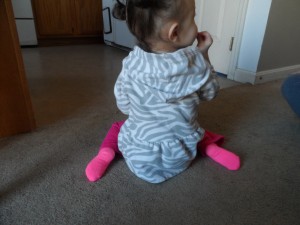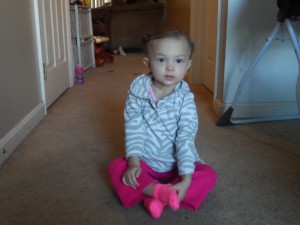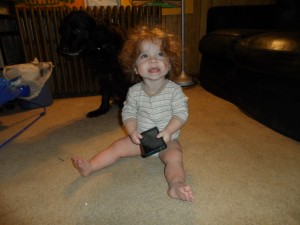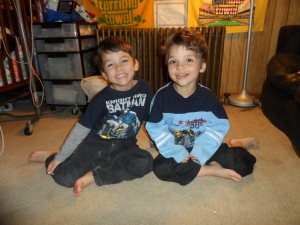March 2016 Family Friendly Community Events
February 29, 2016Diagnosis and Treatment of Childhood Apraxia of Speech (CAS) Part One of a Series
March 28, 2016Does your toddler crawl across the floor and then push himself backwards into a sitting position where his little bottom drops between his feet and knees? When you observe your child sitting, do her legs appear as if they are in a “W” position? Then your child may have developed the habit of “W-sitting”. I’d venture to guess that at least 50% or more of the toddlers I see for evaluations in early intervention are W-sitters, so it is fairly common. But, mind you, from a therapeutic and medial standpoint it is a bad habit that we like to break in early childhood, because W-sitting may cause developmental and /or medical problems down the road. You may see teenagers and adults who still W-sit, but you may also encounter adults who tell you that they needed knee and hip replacements or have joint problems and it could be due in part to sitting in this awkward (for those of us who don’t do it) position for most of their lives.
W-Sitting in above photo is a NO-NO!
First off, why do some children W-sit in the first place? A few reasons why little kids begin to sit this way include 1) It is a stable position where no balance reactions are needed to maintain it, in other words, they can’t fall out of a W-sitting position, like they can other sitting positions 2) children with weaker core/trunk muscles tend to sit this way because other sitting positions require more trunk/core strength to maintain and this position is easier for them 3) W sitting does not require a child to use trunk rotation or to reach from side to side crossing the middle (midline) of their body, so for children who avoid weight shifting and trunk rotation, this is again an easy sitting position to maintain.
Ring Sitting in above photo is fine!
While many babies may W-sit at some point as they are learning to sit and crawl, it becomes problematic when this becomes their main or only sitting position. What kinds of problems may arise from long term W-sitting? If you talk to a TEIS PT, they may tell you joint, knee, hip, ankle and/or foot problems. A TEIS OT may tell you that sitting in this position may also affect a child’s ability to cross the midline (middle) of her body while reaching, inhibit the use of both her hands equally and later on interfere with fine motor tasks or the development of a hand preference.
Long Sitting in above photo is a nice position to encourage
So, how should your child be sitting during play? Well, he has a variety of choices: ring sitting, long sitting and side sitting are much preferred. And if a child sits back on his feet and ankles with them underneath his bottom, and does not let his bottom drop between his feet, this position is also ok. Many kids sit back on their feet and ankles before rising into a tall kneeling position. And, by the way, half kneeling and tall kneeling are also great play positions!
Side Sitting in above photo is much preferred over W-Sitting!
W-sitting is easy to discourage and the habit can be broken if you are persistent in changing your child’s sitting position to a more preferred position during play. With reminders and repetition, as kids become older they may only need a verbal reminder such as “criss cross apple sauce” in order to change to a ring sit, or “fix your legs” in order to long sit or side sit instead of W-sit. You can also provide your child with a small chair and table to sit at for play, but be sure his back touches the back of the chair and his feet can firmly touch the floor. Ideally when seated a child should be in a 90-90-90 position. Or if your child is long sitting or ring sitting, use a breakfast tray as a table on the floor for her to play on.
Your PT can give you suggestions on other ways to help strengthen your child’s core and trunk muscles during play, & ways to work on weight shifting, which will also help her to sit more easily in other positions. Your child’s OT can give you ideas on crossing midline and using both hands equally during play. Look for us to address ways to encourage core/trunk strength in a future TEIS Blog.





 Send to a friend!
Send to a friend!